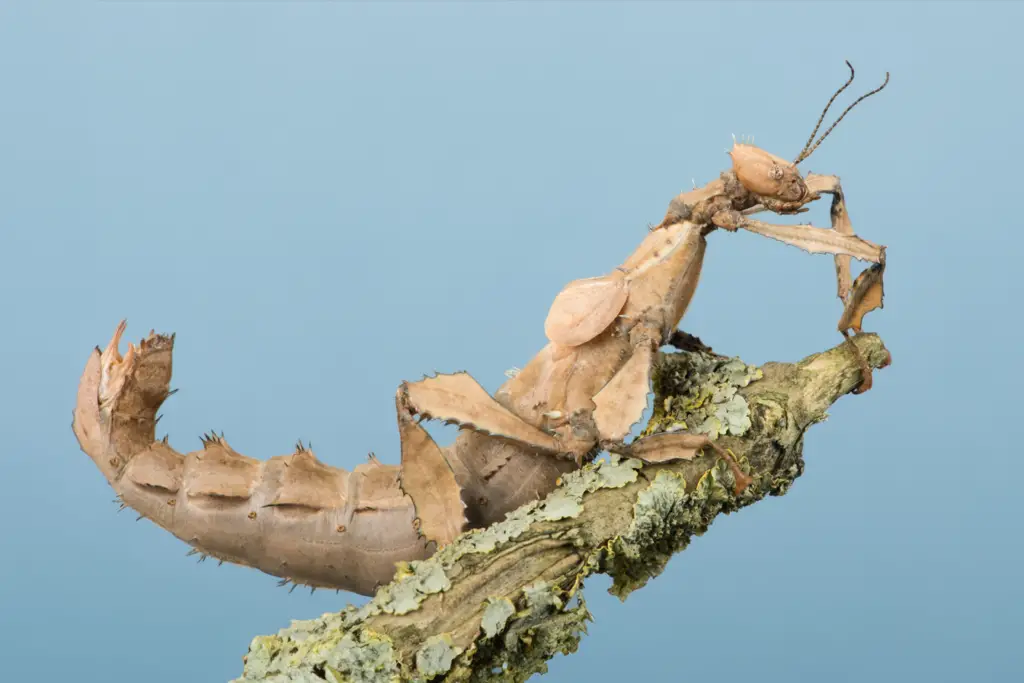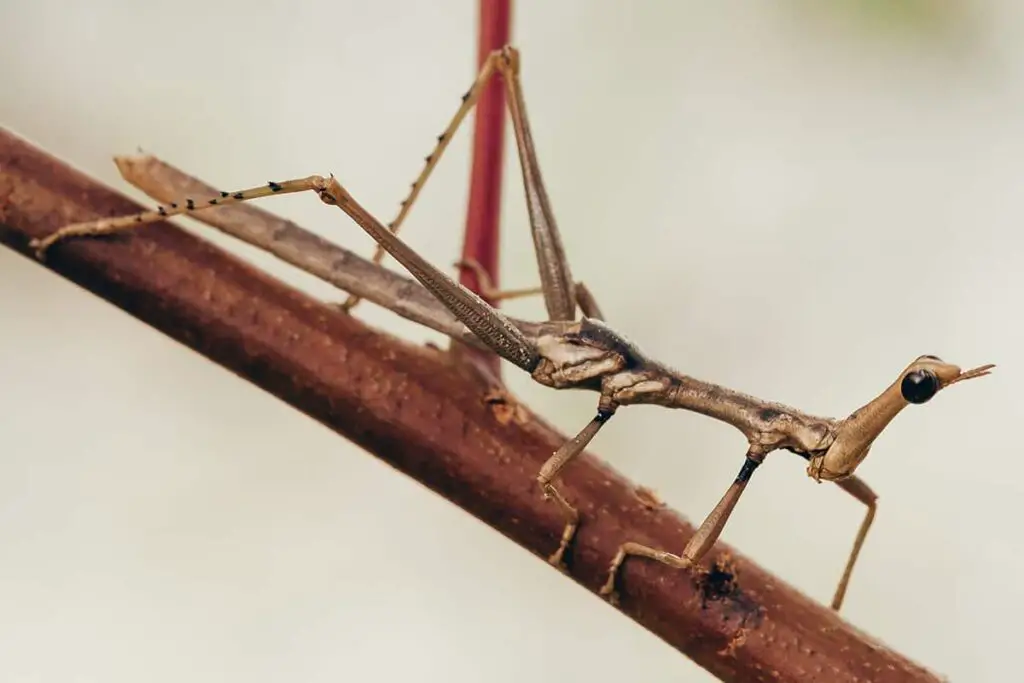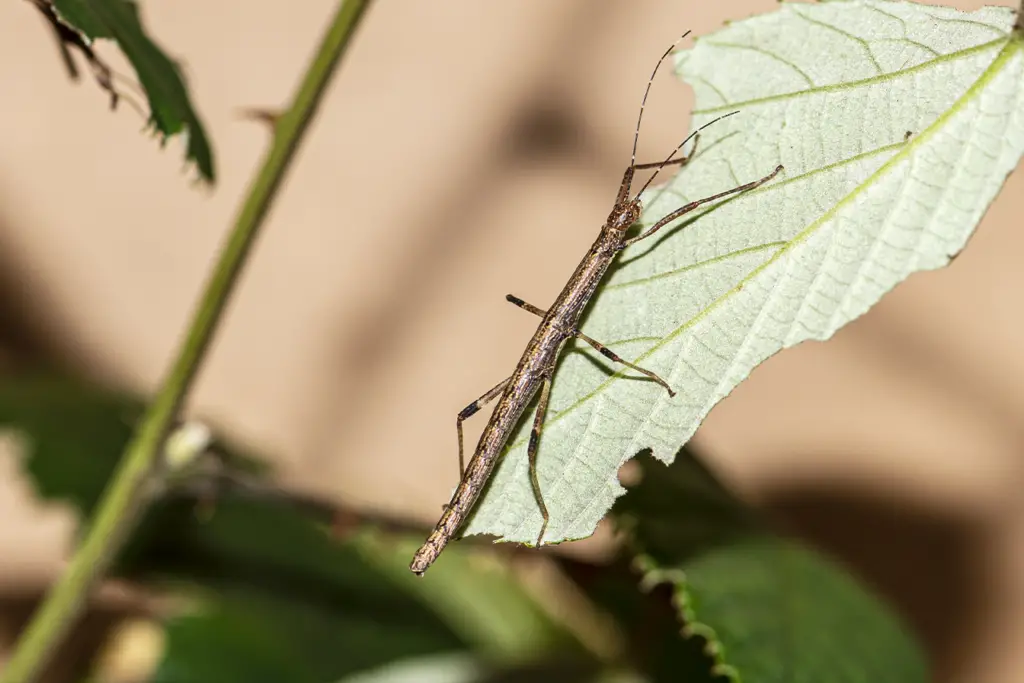
If you’re considering inviting a stick insect into your life as a pet, you might wonder how crucial sunlight is to their well-being. Surprisingly, while these intriguing critters are nocturnal and prefer to come out when it’s dark, maintaining a day/night cycle is essential for their health. Your stick insect will not require direct sunlight, which can be harmful, but they do need a consistent light source to mimic natural conditions. This helps regulate their biological clock, known as the circadian rhythm, which is vital for their overall health and activity levels.
Creating the right environment for your stick insect includes providing light, but it’s also about the quality and duration of this light. Offering a habitat that closely resembles their natural surroundings will support their lifecycle and behavior. A light timer can be a handy tool to simulate the natural rise and set of the sun, fostering a healthy day/night cycle. Remember, adequate lighting is just as important as the correct humidity and temperature for creating an ideal habitat for your stick insect.
Stick insects thrive when their basic needs are met, and understanding these needs can be quite fascinating. True to their nocturnal nature, they will be more active and likely to feed during the evening hours. However, the provision of light during the day supports their natural instincts and contributes to a stable environment that keeps your stick insect healthy and happy.
Stick Insects’ Sunlight Requirements
While caring for your stick insects, understanding their lighting needs is crucial for their well-being. Your critters do need exposure to a light source to maintain a healthy day/night cycle, but direct sunlight can be harmful to them.
Here are the key points to consider:
- Indirect Light: Provide a soft, indirect light to mimic their natural habitat. Direct sun can cause overheating and dehydration.
- Day/Night Cycle: Stick insects thrive on a regular light cycle, typically 12 hours of light followed by 12 hours of darkness.
You can achieve the right balance by placing the terrarium in a room with natural light, but away from windows where direct sun can shine in. If natural light is not sufficient, consider using an artificial light source like a standard household bulb or a specialist reptile daylight bulb; these should also be indirect and not too intense.
Why is this necessary? The rhythm of light and dark helps regulate their biological clock, which is essential for behaviors like feeding and molting.
In summary,
- Avoid direct sunlight.
- Ensure a consistent day/night rhythm.
- Consider artificial lighting if natural light isn’t enough.
By keeping these simple guidelines in mind, your stick insects should enjoy a comfortable and stress-free environment. For more advice on the subject, various resources are available, such as keeping and caring for stick insects to better understand their requirements.
Benefits of Sunlight for Stick Insects
While stick insects are nocturnal, they still benefit from exposure to sunlight. Here’s how a little bit of sunshine can be healthy for your pet stick insect.
Promoting Natural Behavior
By replicating the natural day-night cycle, including periods of sunlight, you encourage your stick insect to exhibit natural behaviors. This includes their feeding and mating habits, which are influenced by the light cycle. Stick insects are more active during the darker periods, so establishing a day-night cycle with light helps regulate their activity.
Vitamin D Synthesis
Just like in humans, sunlight aids in Vitamin D synthesis in stick insects. Although they obtain most of their nutrition from their plant-based diet, the limited sunlight they receive contributes to their overall health by facilitating the use of calcium, which is crucial for their exoskeleton development.
Regulating Life Cycles
Stick insects rely on environmental cues, such as light, to regulate their life cycles. The light-dark cycle provided by sunlight and darkness plays a significant role in the timing of molting and reproduction. Ensuring your stick insect has access to natural light can help maintain these vital biological rhythms.
Creating a Suitable Habitat
When setting up a habitat for stick insects, your aim is to mimic their natural environment as closely as possible. This includes managing lighting to accommodate their day and night cycles.
Artificial Lighting Options
Stick insects generally do not require specialized UV lighting like some other pets. However, if you’re keeping them in a room without natural light, artificial lighting is necessary to maintain a regular day-night cycle. Simple LED or fluorescent bulbs can suffice, just ensure the light is not too intense. It’s best to have the lights on a timer to simulate natural day length consistent with the season.
Natural Light Access
If you can place the habitat in a room with windows that let in natural light, this is beneficial for your stick insects. However, be wary of direct sunlight as it can excessively heat the enclosure, leading to harmful conditions for your pets. Your stick insects should have access to brightly lit conditions during the day, but not direct sunlight which could be dangerous.
Monitoring Light Exposure
Regularly monitor light exposure to ensure a healthy habitat. This includes maintaining a consistent light schedule, protecting against overheating during the day, and ensuring complete darkness at night to not disrupt the stick insects’ nocturnal activity. Ideally, aim for about 12 hours of light and 12 hours of darkness, adjusting slightly with the seasons. Using a light meter or timer can help manage these conditions accurately.
Health Considerations Without Sunlight
In the absence of sunlight, your stick insects could face a series of health challenges that can affect their well-being and longevity.
Stress Indicators in Stick Insects
When your stick insects don’t get a proper day/night cycle, they may show signs of stress. Symptoms such as reduced activity or changes in eating habits could arise. They require a day/night cycle to maintain their natural rhythms, and without it, their usual behavior might be disrupted.
Growth and Development Problems
Without adequate light, including natural or artificial sources that simulate the day/night cycle, stick insects might experience issues related to growth and molting. Proper lighting is crucial for them to molt properly, and insufficient light could lead to difficulties shedding their exoskeleton, potentially resulting in physical deformities or even mortality.
Frequently Asked Questions
When caring for stick insects, understanding their needs for light as well as their environmental and nutritional requirements is key to ensuring their health and longevity.
How can I ensure my stick insect gets enough light?
Stick insects require a day/night cycle to maintain their natural rhythm. You should provide them with indirect sunlight or artificial light for about 12 hours a day to mimic their natural habitat.
What are the suitable temperature conditions for stick insects?
Maintaining a temperature between 20-30°C (68-86°F) is ideal for stick insects. This temperature range helps them to remain active and properly digest their food.
What kind of habitat is best for a stick insect’s longevity?
A well-ventilated enclosure with enough vertical space for climbing and hanging is crucial, as stick insects require room to molt. Include plenty of foliage and sticks that mimic their natural environment for the best care.
Are stick insects able to feed on cucumber or other vegetables?
While stick insects mainly consume leaves, they can occasionally be given vegetables like cucumber as a supplement to their diet. However, ensure that their primary diet consists of leaves, especially from plants like bramble or oak.
Can you tell me if stick insects have a tendency to bite?
Generally, stick insects are not aggressive and do not bite. Their defense mechanism is primarily camouflage. They are safe to handle carefully but always with gentle hands to avoid causing them any harm.
What are the dietary requirements to keep a stick insect healthy?
Providing fresh leaves from suitable plants such as bramble, eucalyptus, or raspberry is essential for a stick insect’s diet. Access to clean water for hydration, either through misting the leaves or a shallow water dish, is also necessary.
Driven by a passion for those tiny creatures that rule our world, we at Bug Domain strive to be your go-to resource for information on insects.



